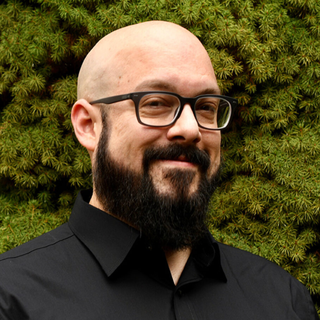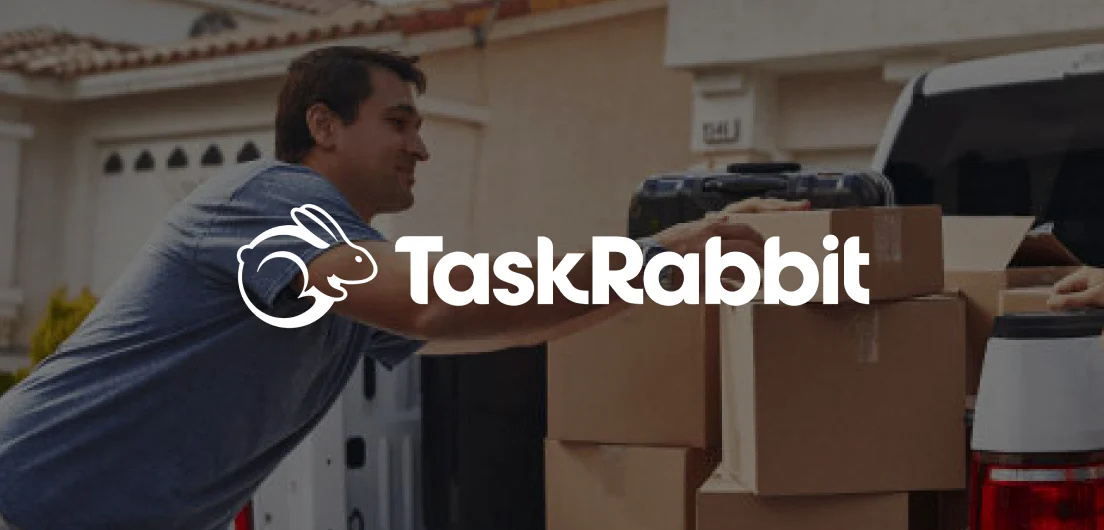You need to hire. We're here to help.
Find and hire top Brand Designers, fast.
Get matched to 3 highly-qualified Brand Designers in minutes.
Hire Top Brand Designers.png)
.png)
.png)
How to hire top Brand Designers at Braintrust
Post a job
Create an account and publish your job posting free of charge.
Review candidates
Manage and hire top talent instantly.
Get to work
We simplify onboarding, invoicing, compliance, and more.
Meet our Brand Designer community
Braintrust is a user-owned talent platform created by and for the world’s top talent. This includes a talented network of experienced Brand Designers available for hire.
Looking for Work

Phil Riehl
- Figma
- UX/UI Design
Looking for Work

Kamryn L
- Brand Design
- Illustration
Looking for Work

Scott Mosher
- Adobe Illustrator
- Photoshop
How to hire Top Brand Designers

Overview
Hiring a Brand Designer is a significant decision, involving several aspects. These professionals play a crucial role in shaping a company's image, reflecting its values, mission, and services through visual elements, including logos, typography, colors, and more.
In startups, Brand Designers often have a diverse role due to the limited resources. They might be required to wear many hats, working on anything from the website design to promotional materials, often under tight deadlines. They need to be comfortable with a high degree of ambiguity, given that startups frequently pivot their business model. A successful candidate must be adaptable, possess a range of design skills, and be able to make an immediate impact.
In contrast, at a larger company, Brand Designers tend to have more specialized roles with specific duties within a broader design team. They often work within established branding guidelines, focusing on maintaining brand consistency across various platforms and departments. These roles require individuals who can navigate a more structured and process-oriented environment, requiring strong collaboration skills to work with diverse teams.
When considering the hiring model, full-time versus hourly can have significant implications. Full-time Brand Designers typically work directly for the company, committing to a certain number of hours per week, often with benefits. They provide stability, allowing the company to have a consistent design presence and the capacity to handle larger, ongoing projects.
On the other hand, hiring Brand Designers on an hourly basis can provide flexibility. Freelance or contract designers are ideal for specific projects, allowing business owners to adjust their design resources based on needs. However, the hourly model can be more expensive in the short term, and the company may lack control over the designer's time.
The key to successful hiring lies in identifying the company's needs and understanding the trade-offs. It's crucial to consider the size and stage of your company, the scope of the design work, the budget, and the desired level of commitment when deciding on the right type of hire.
Relevant Experience and Portfolio
A professional designer's portfolio is often the most telling representation of their capabilities. This should be a collection of their best work that showcases a variety of styles, mediums, and projects. Look for evidence in their design projects of high-quality logo design, color palette creation, typography selection, packaging design, product design, and the formation of cohesive brand identities. If they've worked with recognizable brands as well as small businesses, assess how their designs contributed to the overall perception of those brands. The portfolio also provides insight into their design process, problem-solving abilities, and attention to detail, giving you a snapshot of their design journey from concept to completion.
Understanding of Branding Principles
The essence of brand design extends beyond aesthetics; it's about forging an emotional connection between a company and its audience. Therefore, a brand designer should possess a deep understanding of key branding principles, including brand strategy (how to position a brand in the market), brand identity (creating a distinctive image), and brand communication (consistently conveying the brand's message) to meet your design needs and brand style guide. They should have the ability to carry out research, understand the target audience's motivations, and integrate these insights into their design decisions. They should also be familiar with consumer psychology, and the impact of colors, shapes, and typography on perception and emotion.
Creative Thinking
Creativity is at the heart of brand design and design services. This doesn't just involve crafting appealing visuals; it also involves approaching problems in innovative ways and devising unique solutions. An excellent brand designer will exhibit a knack for generating fresh ideas and concepts that help a brand stand out with UI/UX in a crowded marketplace. Their creativity should extend to all facets of their work, from concept ideation to the selection of colors, fonts, and images, to the incorporation of the brand's story and values. Additionally, they should have a keen eye for trends in design and culture, enabling them to create designs that are not only visually compelling but also relevant and timely.
Communication Skills
Communication is paramount in brand design, as it's an iterative creative process that involves ongoing collaboration between the designer and the brand team during revisions. A designer with good project management should be able to grasp your brand's vision, goals, and values, and articulate how their design choices reflect these aspects. They need to be able to listen to feedback and incorporate it effectively, and to clearly justify and explain their design solutions. Moreover, they should be comfortable presenting their work and ideas, not only to you but potentially to stakeholders or clients as well. Lastly, their written communication skills should be strong, as they might need to create design guidelines or documents outlining the rationale behind their design choices.
Technical Skills
While creativity is essential, a brand designer also needs strong technical skills to bring their ideas to life. They should demonstrate proficiency in the latest design software like Adobe Creative Suite (Adobe Illustrator, Adobe Photoshop, InDesign), Sketch, Figma, or similar. Knowledge of design principles such as color theory, typography, layout, and hierarchy is fundamental. They should also have a good understanding of print and digital production processes, such as preparing files for print or web use, and designing for different screen sizes and resolutions. For digital mediums, basic knowledge of e-commerce, SEO (search engine optimization), web design, web development, UX/UI design principles, and possibly even HTML/CSS could be advantageous. The ability to use prototyping tools or motion design software, like Adobe After Effects or Principle, can add another level of depth to their work, creating more engaging and interactive experiences.
Versatility
In today's dynamic world, a brand needs to be represented across various mediums, each with its unique constraints and opportunities. Hence, a brand designer should be versatile, and comfortable designing for both print (like packaging, business cards, or advertising) and digital (websites, social media graphics, online ads) platforms. They should be able to take a core brand identity and adapt it to work effectively across these different mediums, maintaining brand consistency while optimizing for each platform's unique characteristics. The designer's portfolio should exhibit this flexibility, showcasing successful brand applications in multiple formats and environments.
Understanding of Your Industry
Although not a strict requirement, having a designer familiar with your industry can be advantageous. Such a designer would be aware of industry trends, the competitive landscape, and the nuances of communicating with your specific audience, making it easier to create a design that resonates. They would know what works and what doesn't in your industry, which can help accelerate the design process and improve the end results. They can also incorporate industry-specific symbols, language, or motifs into the design more effectively. However, sometimes a fresh perspective from outside the industry can also be valuable, bringing new ideas and challenging established norms.
Professionalism
The candidate should exhibit a high degree of professionalism. This includes meeting deadlines, delivering work to specifications, being organized and detail-oriented, and communicating promptly and clearly. Respectful handling of feedback, both receiving and giving, is crucial as design is often a collaborative and iterative process. They should be capable of managing their workload, prioritizing tasks, and keeping cool under pressure. They should also show commitment to their professional development, staying updated with the latest design trends, techniques, and tools. Above all, they should demonstrate respect for your brand's vision and values and the drive to help you realize them through thoughtful design.
Expert Resources for Hiring Brand Designers
Frequently Asked Questions
How much does it cost to hire a Brand Designer?
The cost to hire the right Brand Designer can vary greatly depending on their level of experience, the complexity of the project, and the region where you're hiring. Entry-level brand designers may command salaries ranging from $40,000 to $60,000 annually, while experienced designers can expect to earn upwards of $80,000 to $100,000. It's also important to factor in recruitment costs, including advertising the position, time spent on interviews, and potentially working with a recruitment agency.
Where can I find a Brand Designer?
There are several places where you can find a designer experienced in-house brand identity design. Traditional methods include posting on job boards like LinkedIn, Indeed, or Glassdoor. Alternatively, there are design-specific job boards such as Behance and Dribbble. You can also hire freelancers from platforms like Braintrust. Recruitment agencies specializing in design talent can be another option.
Where can I hire a Brand Designer?
To recruit the best designer, first, define the job description detailing the skills and experience required. Use this to advertise on job boards, social media, and your company's website. Networking at design events or reaching out through professional networks can also be effective. When assessing candidates, review their portfolios thoroughly, and consider setting up a design test to evaluate their abilities. Lastly, an effective interview process is crucial to understand their approach to work, communication style, and cultural fit.
Where can I hire a Brand Designer?
The hourly rate of a Brand Designer can greatly vary depending on their years of experience, the scope of work, and geographical location. A freelancer designer can charge anywhere from $50 to $200 per hour. Those with more design experience can charge even higher rates. Remember, rates are often negotiable and can depend on the long-term value the designer brings to your brand.
What does a brand designer do?
A brand designer's role revolves around creating and developing a brand's visual identity, which includes logos, color palettes, typography, and all visual elements that communicate the brand's personality and values. This professional works to ensure a consistent and cohesive look and feel across all brand touchpoints, including websites, social media, marketing materials, packaging, and more. They also help define and maintain brand guidelines, which provide direction on how to represent the brand across various mediums. Through their work, they aim to create a distinctive and memorable brand that resonates with the target audience.
What is a brand designer vs graphic designer?
While both roles involve design and visual communication, they differ in scope and focus. A full-time or freelance graphic designer typically works on creating visuals for a wide range of applications, such as websites, brochures, advertisements, and more. On the other hand, a brand designer specifically focuses on designing and managing a brand's visual identity. They work on creating a consistent and cohesive visual representation of the brand's values and personality across all platforms and materials. Their role is more strategic, often involving a deeper understanding of the brand, its audience, and the market landscape.
Can a graphic designer be a brand designer?
Yes, a graphic designer can become a brand designer. Both roles require strong design skills and a keen understanding of visual communication. However, transitioning from graphic design to brand design often requires a deeper focus on strategic thinking and understanding of branding principles. This includes knowledge of how to create and maintain a cohesive brand identity, how to understand and target a specific audience, and how to position a brand in a competitive market. Some graphic designers may naturally evolve into brand design roles over the course of their careers, especially if they have opportunities to work closely with brands and develop a deeper understanding of branding.
What is the difference between a brand designer and a UX designer?
Brand designers and UX (User Experience) designers play different but complementary roles. A brand designer focuses on creating a visual identity that communicates a brand's personality and values consistently across various platforms. Their work includes designing logos, color palettes, typography, and more. A UX designer, on the other hand, focuses on designing products (typically digital) with the end user in mind. They aim to create intuitive, efficient, and enjoyable experiences for the user. Their work includes research, creating user personas, wireframing, prototyping, and usability testing. While their focuses are different, both contribute to the overall perception and experience of a brand. In some cases, these roles can overlap, especially in smaller teams or in projects where the user experience is strongly tied to the brand experience.
Get matched with Top Brand Designers instantly 🥳
Hire Top Brand Designers


.webp)

.webp)



.png)